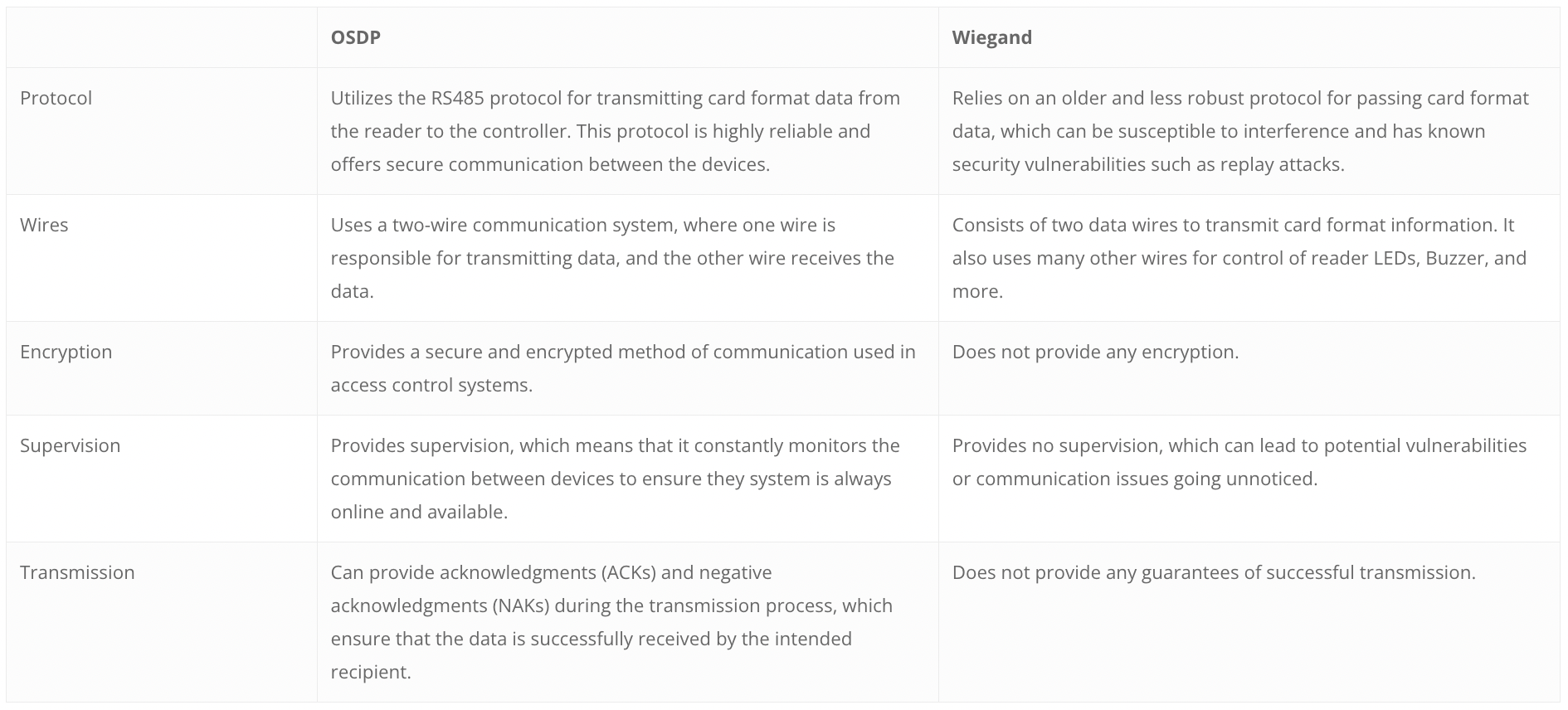What is OSDP in Access Control? A Complete Guide.
Access control systems are essential for ensuring the security and safety of a building or facility. They allow authorized individuals to gain entry while keeping unauthorized individuals out. OSDP, which stands for Open Supervised Device Protocol, is a communication protocol specifically designed for these access control systems. It offers advanced features and benefits, making it a popular choice for many organizations.
Understanding OSDP is crucial for anyone involved in physical security, from system administrators to security professionals. This guide will cover everything you need to know about OSDP, including its key features, advantages and how it compares to other existing protocols.
What is Open Supervised Device Protocol?
The Open Supervised Device Protocol (OSDP) is a communication protocol that is used to interface a control panel or security management system with peripheral devices such as card readers, keypads and biometric readers. It is an open standard protocol that provides advanced security features and enhanced functionality compared to older protocols like Wiegand.
This protocol allows for bi-directional communication, enabling devices to exchange information and receive commands, enhancing access control systems' functionality and flexibility. OSDP offers improved security, reliability and interoperability, making it a more advanced and preferred choice for access control device communication.
What are the Three Critical Components of OSDP?OSDP provides a framework for controlling and monitoring access to physical spaces to ensure the security and efficiency of various facilities. It has three critical components, each playing a vital role in its overall functioning.
 Access Control Systems
Access Control Systems Access control systems allow for the monitoring and management of access permissions, as well as the logging of entry and exit activities. With OSDP, supported access control systems (such as the NetBox™ and OnGuard® systems) can communicate and exchange data securely and efficiently, ensuring that only authorized individuals can access certain areas, preventing unauthorized physical access and potential security breaches.
ReadersOSDP readers are devices that interact directly with the users, such as card readers, biometric devices or keypads. They are responsible for capturing user data and sending that information to the controller for processing.
ControllersOSDP controllers are responsible for managing and controlling the communication between the readers and other devices in the system. They act as the intelligence in the field and make local decisions on who should and should not have access to areas within the facility.
What is the Difference Between OSDP Communication & Wiegand Communication?The OSDP enables bi-directional and secure communication between the access control panel and the reader. In contrast, the Wiegand communication is an older and simpler protocol that is one-way communication with no encryption or security. Over the last several years, there has been an ongoing transformation in these types of technologies. Although both protocols transmit data for access control, there are distinct differences between OSDP and Wiegand communication.

__________________________________________________________________________________________________________________________________________
 By: Colton Menzel, Director of Sales, 3millID
By: Colton Menzel, Director of Sales, 3millID
Colton is a tech savvy sales hunter with a trusted high growth customer base. Since joining the 3millID team in 2016, Colton has led the charge for customer growth, developing security integration partnerships and expanding 3millID’s brand coast to coast. While possessing product and technical expertise, Colton spearheaded the Mobile Credentialing platform alongside LenelS2 and the expansion of BlueDiamond to further 3millID’s reputation for being on the cutting edge of continual development in the DESFire credential and reader technology space. Colton’s passion for building lifetime customer relationships, large and small, and delivering the most secure solutions for 3millID customers, have made him a critical part of 3millID’s sales growth. Having attended the University of South Carolina and the University of Colorado-Boulder, Colton holds a B.S. in Finance from the Leeds School of Business.
